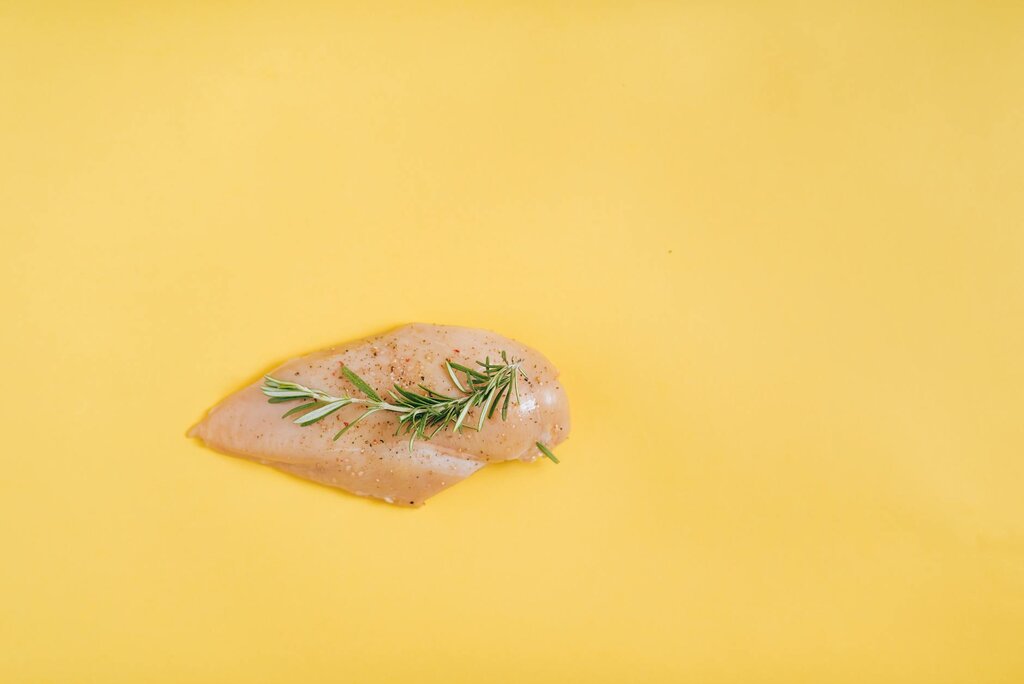Last Updated: 28/03/2025
Raw Diets for Pets
See our vets complete review of the pros and cons as well as the best quality raw diets.
Author: Dr Carla Paszkowski BVSc (Hons)
Reading Time: 52 minutes - long read
Last Updated: 28/03/2025
See our vets complete review of the pros and cons as well as the best quality raw diets.
Author: Dr Carla Paszkowski BVSc (Hons)
Reading Time: 52 minutes - long read
Raw meat diets for pets have increased in popularity dramatically in recent years. But are they actually good for your pet?
One one hand, we have pro-raw advocates who claim that a raw meat diet can greatly benefit the health of cats and dogs. However, on the other side are those who are wary of raw feeding due to the reported associated risks.
The internet, true to form, is full of conflicting and heavily opinionated information, and it can be incredibly confusing. We all just want to do what's best for our pet, but what information can you actually trust? Are there studies to support raw meat diets? What does the science really say?
To help you navigate the topic, we've collated some popular 'pros' and 'cons' of raw feeding, and discussed what evidence there is to support each claim.
The definition of a raw meat diet is one that includes uncooked ingredients derived from food animal species and that are fed to dogs or cats living in home environments.
Many pet owners choose to prepare raw diets at home, but ready-made commercial diets are also available. The most common types of commercial raw meat diets include fresh, frozen, or freeze-dried. Many of these diets are formulated to meet AAFCO nutritional guidelines for cats and dogs, but some are labelled as intended for occasional or supplemental feeding only. (It's always important to check the label to ensure your pet is receiving a complete and balanced diet!)
While a raw meat diet may work well for some pets, it is important that pet parents are aware of the health risks they can pose to their pets and people in their lives. If you do choose to feed your pet a raw diet, it is important to take steps to reduce the risks of bacterial transmission and dietary imbalance.
Want to read more? Check out our other articles:
Does grain free dog food cause heart disease?
What makes a 'quality' pet food?

With so many benefits reported on the internet anecdotally, it's unsurprising that the raw food movement has become so popular. We've listed the most commonly claimed 'benefits' below and delved into each one a little deeper.
Many pet owners find their cats or dogs prefer the taste of a raw meat diet, and that it's easier to tempt fussy eaters. This is easy to imagine, and is of course more of a general statement. While there has been research which suggests that dogs prefer to eat high meat diets over high carbohydrate diets1, there has not been the same level of research into whether raw meat is more palatable than cooked meat or other types of pet food. We are happy to conclude that the palatability of a raw diet depends on the diet itself and your pet's personal preference.
Many believe that a raw diet is better because it is closer to your pet's natural, ancestral diet. The theory goes that dogs should be fed a diet that mirrors their wild ancestors, the Grey Wolf, due to DNA similarities. This 'ancestral diet' theory argues that the dog's anatomy (ie teeth designed for cutting and slicing, shorter intestinal tracts) is built for a carnivorous diet.
This is a nice thought, but if this idea is to be considered as justification for a raw meat diet, there are a few important points to consider:
Raw diets are believed to be easier to digest because essential nutrients such as enzymes, vitamins, and amino acids haven't been destroyed by cooking.
So does this mean that protein is more bioavailable if it has been cooked? Interestingly, the effect cooking has on protein depends on what type of ingredient the protein is drawn from - in particular, whether it is from plant material or meat. (Remember - plants provide protein too!). For protein derived from meat, heat processing can have negative effects and reduce its bioavailability. But for protein derived from plants, cooking can actually improve the bioavailability. This is because the heating process denatures some of the antinutritional factors that are naturally found in plants. For instance, legumes contain trypsin inhibitors that reduce bioavailability of protein. Heat processing denatures these inhibitors and therefore increases protein bioavailability, making legumes easier to digest after cooking.
What does improved digestibility mean? Ultimately, higher digestibility = smaller, firmer poos. (See our next point for more about this!)
Another proposed benefit of raw diets is that they create smaller, firmer stools with less odour. In general, this is believed to be true - but it may not be due to whether the food is raw or cooked, but more about the meat vs carbohydrate content. (Typically a higher meat content diet produces smaller, firmer stools)1. Plus, whether there is a 'difference' or an 'improvement' really depends on what you compare it to. For example, if you swap your dog onto a raw diet after previously feeding them cheap, poor quality supermarket food, then you will likely notice a big reduction in stool size. However, if you already feed a premium diet that is already high in meat content, you might not notice much of a difference in stool size if you swap over to a raw diet.
As mentioned, a high meat content can contribute to smaller stools. But in general, it really comes down to digestibility. If the diet has a high level of digestibility, this results in less digest in the colon, and therefore less faecal output.
But are smaller stools actually a good thing? Smaller stools are without a doubt better for the pet owner, as it means you'll have smaller, less smelly landmines to pick up in the yard! But with regards to your pet, small stool size doesn't automatically mean a happier tummy.
It's easy to assume that smaller stool size must mean that your dog has a healthier gut. For the most part, this is true - however it is a little more complicated, and depends on why the faeces is so bulky. In particular, it comes down to the ingredient in question, and whether the ingredient is of plant or animal origin.
Bulky faeces could be due to undigested plant matter, or undigested meat (or a combination of both). Undigested plant matter in the form of fibre has been shown to be beneficial for the gut, as it feeds the 'good bacteria' present in the colon. (So a bit of bulky poop could be good for your dog if it's due to high quantities of beneficial plant fibre!)
However, undigested meat protein can result in unfavourable compounds such as ammonia, phenols, insoles, and amines - which can play a role in diseases such as colorectal cancer9.
Ultimately, this means that while a raw meat diet may in fact create smaller stools, this doesn't automatically mean your pet has a healthy gut, as a little bit of 'bulk' can be a good thing if it's due to plant fibre.
Another claimed benefit of raw diets is that it can improve your pet's immune system. Interestingly, this claim may also hold some merit. A study conducted on domestic cats fed a raw diet for 10 weeks observed a significant increase in lymphocyte (immune cells) and immunoglobulin production, compared to a control group who were fed a commercial canned diet10. However, it's possible that these increased levels of immune cells were due to exposure to Salmonella in the raw meat, as the cats fed the raw diet were also found to be shedding higher levels of this bacteria in their faeces. Other possible reasons for this immune cell increase include exposure to pathogens, changes in the gut bacteria, or nutritional deficiencies.
So ultimately, it's possible that a raw diet could stimulate the immune system and improve immune function. But it's also possible that this is simply due to higher levels of bacterial contamination, which brings with it its own risks. See below for more about this.
Many pro-raw advocates claim that a raw meat diet can reduce your dog's risk of cancer. There is actually potential for this claim to hold merit, but further testing is required.
The mechanism comes down to the effect cooking has on the food. When muscle meat is cooked at high temperatures, it produces compounds called heterocyclic amines.11 In very high concentrations, these compounds have been associated with cancer. While the concentrations of heterocyclic amines found in pet food are quite low12, it's possible that they still may have mutagenic activity. It's unknown whether there is a cumulative effect of excess exposure to these compounds, but further testing is required to know for sure.

We've discussed the proposed benefits of raw feeding, now we're going to delve into the risks. Unlike some of the benefits, the risks of a raw meat diet are actually quite well documented and heavily supported by research. The two major risks with feeding a raw meat are bacterial contamination and nutritional inadequacy. Let's delve into what this means...
All raw meat can harbour harmful pathogens, regardless of whether it is sold for humans or for pets. Even when the best hygiene practices are followed, contamination can occur at any point in the meat-production process from slaughter, to transport, to handling. This is why us humans take great caution with eating raw meat!
In particular, Salmonella species of bacteria has been reported in a number of studies investigating raw diets in pets.3,4,5 Salmonella is a common cause of food poisoning in both pets and humans.
As mentioned before, there is a common myth that dogs and cats have 'tougher guts' and are less likely to become sick from food pathogens. However, this is untrue, and many dogs will of course experience gastrointestinal upset if fed contaminated uncooked meat. Plus, even if your dog doesn't get sick, they can still introduce a risk to your family.
The risk of bacterial contamination isn't just a concern for your dog, it can affect people in the household too. Animals fed a raw meat diet have been shown to shed these harmful organisms in their stool, and their feeding areas are also found to be 'hot areas' for germs. One study demonstrated that dogs can shed Salmonella bacteria in their faeces for up to two weeks13.
In fact, the risk of this bacteria spreading to humans is so high that the CDC (Centers for Disease Control and Prevention) does not recommend feeding raw diets to pets.
Nutritional adequacy is the second major concern with raw meat diets. Imbalances have been found with both commercially produced and home-made recipes.
Providing a complete and balanced diet is vital for your pet to live a long and happy life. Most pet food is designed to be complete and balanced with regards to macronutrients like energy, protein, fat, carbohydrates, fibre, and all vitamins and minerals. Furthermore, a correct balance is important for all animals, but is particularly vital for felines, who can face deadly illnesses if their diet is deficient in certain nutrients such as taurine.
Home prepared diets, regardless of whether they are raw or cooked, are unfortunately usually found to be imbalanced. Studies into homemade recipes - particularly those obtained from books or on the internet - have found considerable concerns about deficiencies and excesses of essential nutrients, including calcium-to-phosphorus ratio, Vitamin A and E, Vitamin D, and fat.14,15,16
If you are set on preparing a raw diet at home for your dog, we strongly suggest consulting with a veterinary nutritionist for a complete and balanced recipe that suits your pet's size and lifestage.

Many health organisations across the world advise that raw animal based foods and treats should not be fed to pets who come into contact with children under 5, the elderly, pregnant women, chemotherapy patients and other people or pets with a compromised immune system.
If you do wish to feed your pet a raw animal based food or treat, taking some simple hygiene precautions can help to reduce the risks contaminated products could cause illness in people. While raw products are more likely to be contaminated with bacteria, it's important to remember that it can also occur from time to time in cooked products such as canned or dry food. These steps are good to practice regardless of whatever kind of food or treat you feed your pet.
Roberts MT, Bermingham EN, Cave NJ, et al. Macronutrient intake of dogs, self-selecting diets varying in composition offered ad libitum. J Anim Physiol Anim Nutr. 2018;102:568-575.
Axelsson E, Ratnakumar A, Arendt M-L, et al. The genomic signature of dog domestication reveals adaptation to a starch-rich diet. Nature 2013;495;360-364.
Sato Y, Mori T, Koyama T, et al. Salmonella virchow infection in an infant transmitted by household dogs. J Vet Med Sci 2000;62:767-769.
Lefebvre SL, Reid-Smith R, Boerlin P, et al. Evaluation of the risk of shedding salmonellae and other potential pathogens by therapy dogs fed raw diets in Ontario and Alberta. Zoonoses Public Health 2008;55:470-480.
Finley R, Ribble C, Aramini J, et al. The risk of salmonellae shedding by dogs fed Salmonella-contaminated commercial raw food diets. Can Vet J 2007;48:69-75
Meade SJ, Reid EA, Gerrard JA. The impact of processing on the nutritional quality of food proteins. JAOAC 2005;88:904-922.
Crissey SD, Swanson JA, Lintzenich BA, et al. Use of a raw meatbased diet or a dry kibble diet for sand cats (Felis margarita). J Anim Sci 1997;75:2154-2160.
Vester BM, Burke SL, Liu KJ, et al. Influence of feeding raw or extruded feline diets on nutrient digestibility and nitrogen metabolism of African wildcats (Felis lybica). Zoo Biol 2010;29:676-686.
Larsson SC, Wolk A. Meat consumption and risk of colorectal cancer: a meta-analysis of prospective studies. Intl J Cancer 2006;119:2657-2664.
Hamper BA, Bartges JW, Kirk CA. Evaluation of two raw diets vs a commercial cooked diet on feline growth.J Feline Med Surg. 2016 Dec;18(12):991-996
Sugimura T, Wakabayashi K, Nakagama H, et al. Heterocyclic amines: mutagens/carcinogens produced during cooking of meat and fish. Cancer Sci 2004;95:290-299.
Knize MG, Salmon CP, Felton JS. Mutagenic activity and heterocyclic amine carcinogens in commercial pet foods. Mutat Res 2003;539:195-201.
Joffe DJ, et al. Preliminary assessment of the risk of Salmonella infection in dogs fed raw chicken diets. Can Vet J. 2002;43(6):441.
Freeman LM, Michel KE. Evaluation of raw food diets. J Am Vet Med Assoc 2001;218:705-709.
Taylor MB, Geiger DA, Saker KE, et al. Diffuse osteopenia and myelopathy in a puppy fed a diet composed of an organic pre-mix and raw ground beef. J Am Vet Med Assoc 2009;234:1041- 1048.
Dillitzer N, Becker N, Kienzle E. Intake of minerals, trace elements and vitamins in bone and raw food rations in adults dogs. Br J Nutr 2011;106:S53-S56.
Our experts continually monitor the health and wellness space and we update our articles when new information becomes available.
Veterinarian
Dr. Carla graduated from the University of Queensland in 2013 with a Bachelor of Veterinary Science and worked for a number of years in small animal clinics across South East Queensland. While Carla enjoys most facets of clinical veterinary work, she holds a special passion for feline medicine, pocket pets, and nutrition.